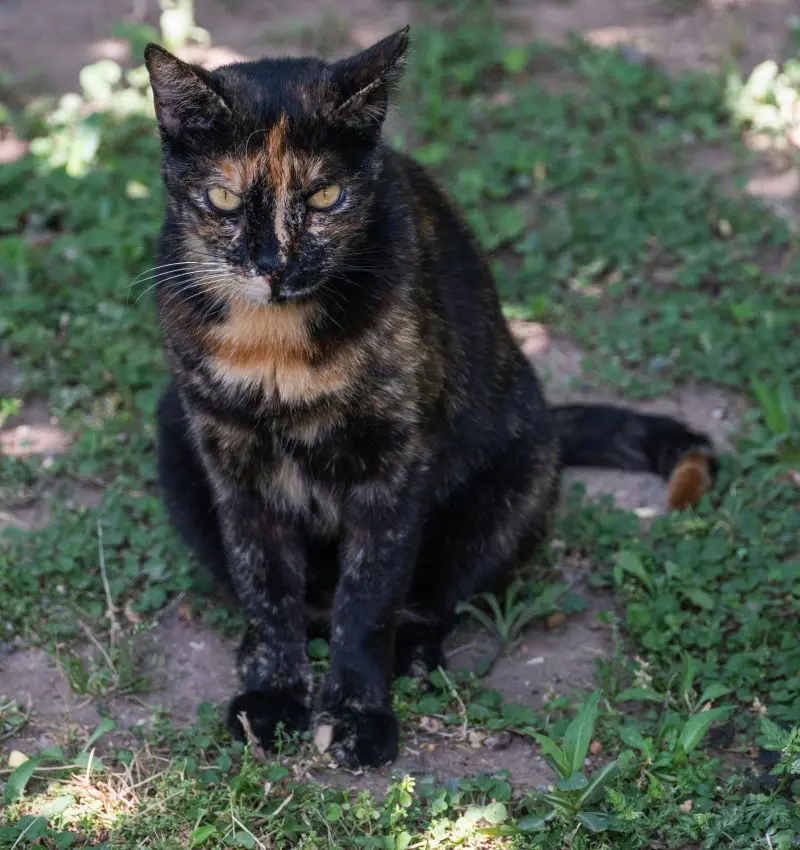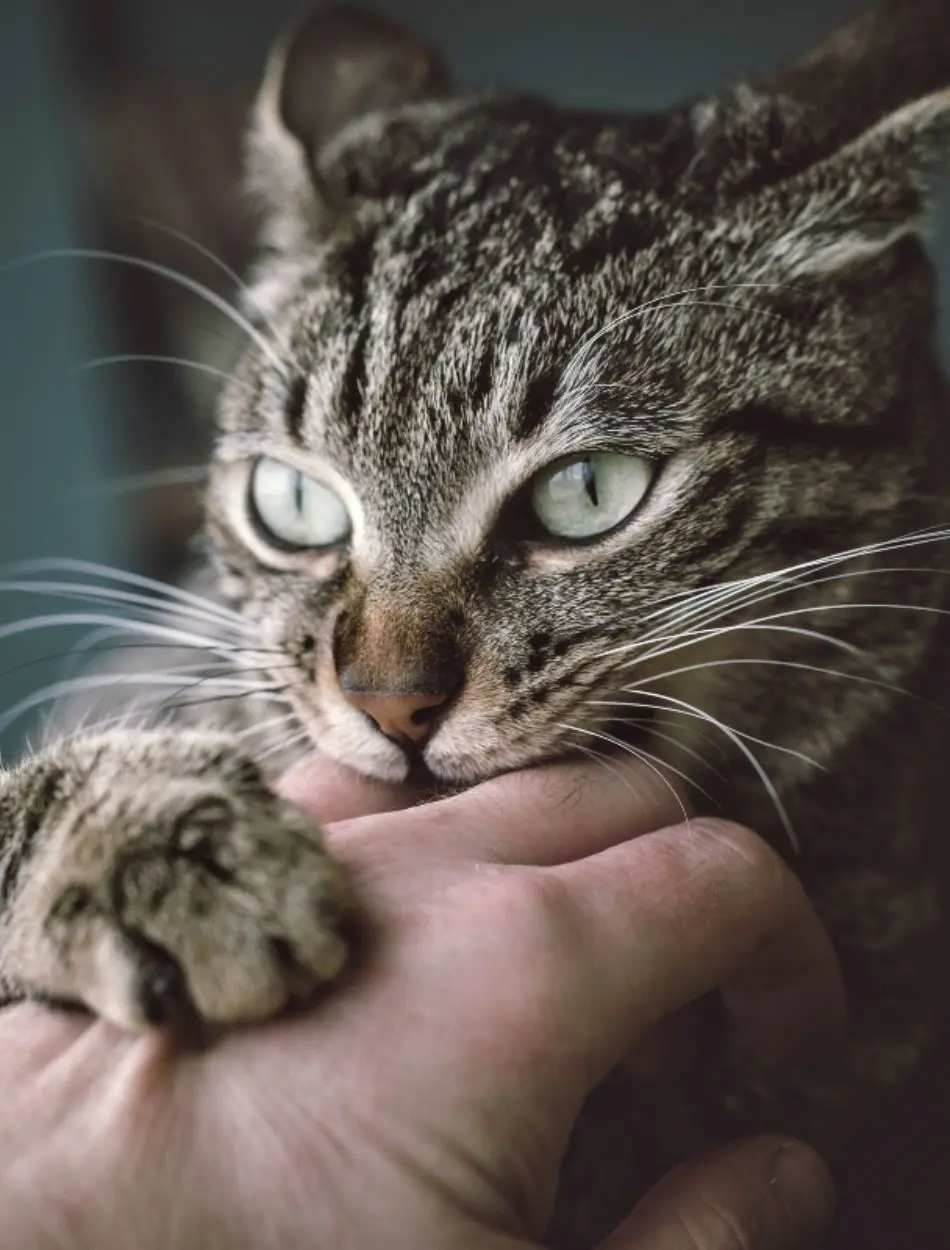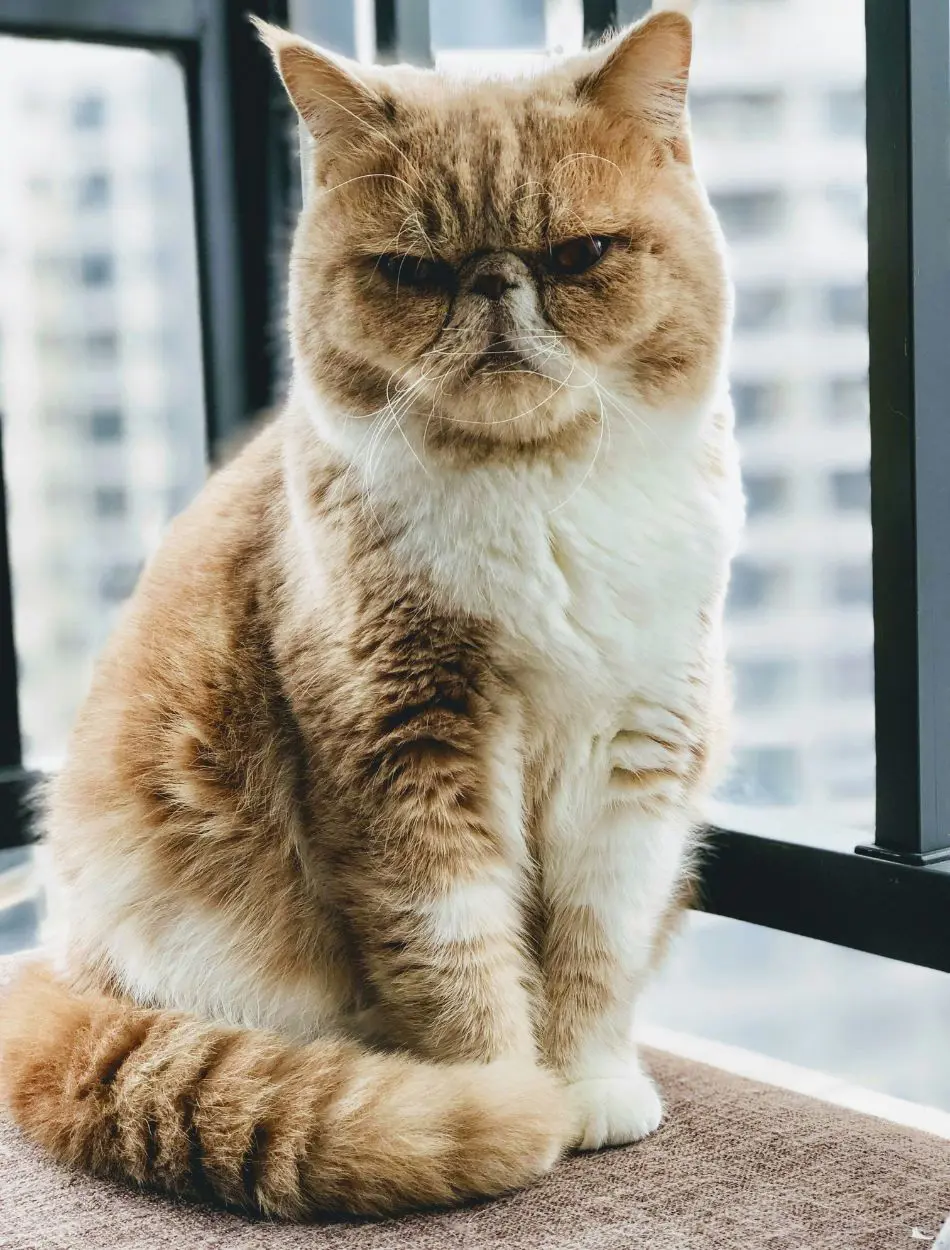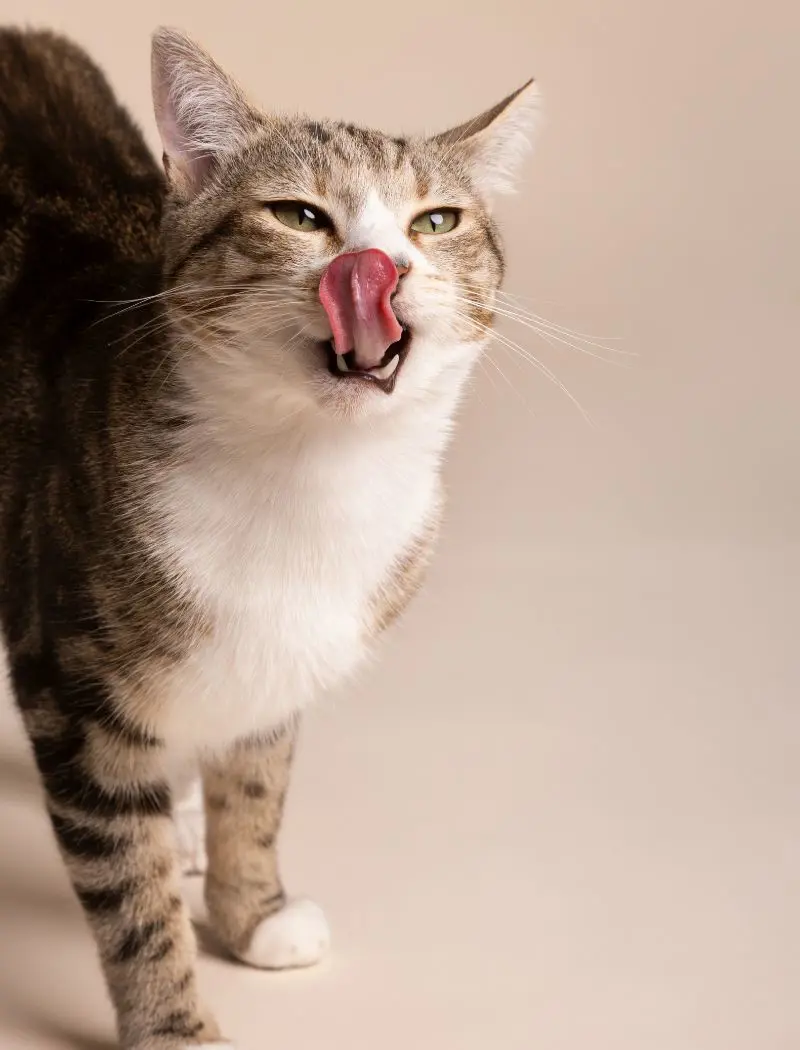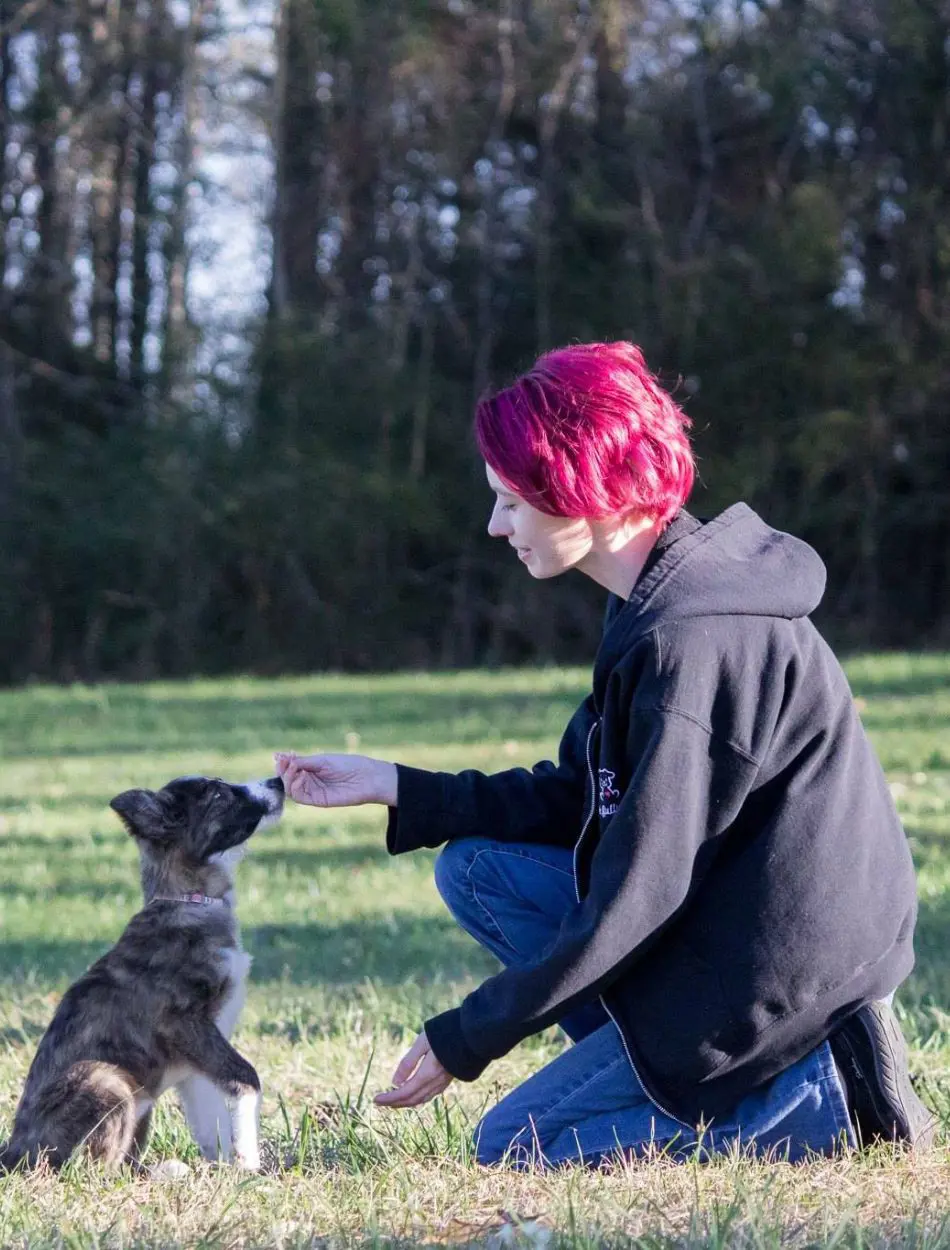Cat Tail Language And Its Meaning
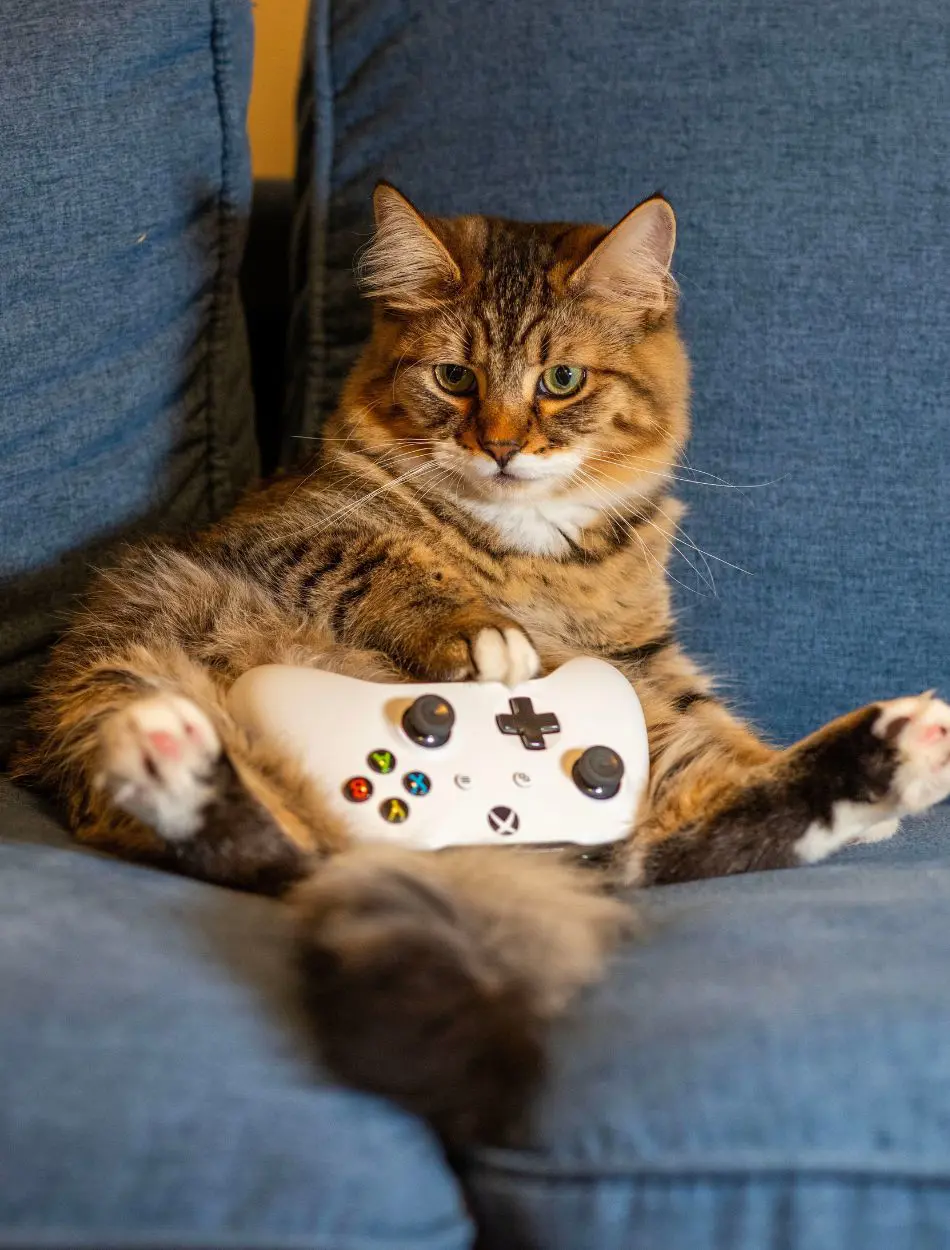
Cats with their fiercely independent yet charming personalities, tend to leave us in suspense regarding what may truly be on their minds.
While the eyes, ears, and much of body language often give some hint, the tail is one of the clearest indicators of their mood. Learning how to read your cat's tail language not only enhances communication but fosters the bond even more.
Key Cat Tail Positions and Its Meaning
A cat's tail is a very strong indicator of its feelings, hence helping one to know their mood and intention. According to petmd, you can understand when your cat is feeling playful, contented, anxious, or stressed by the movement and position of its tail.
This helps in learning to read these signals to strengthen your bond and ensure smoother interactions. Here’s a closer look at common tail positions and what they say about your cat's emotions:
1. Erect Tail
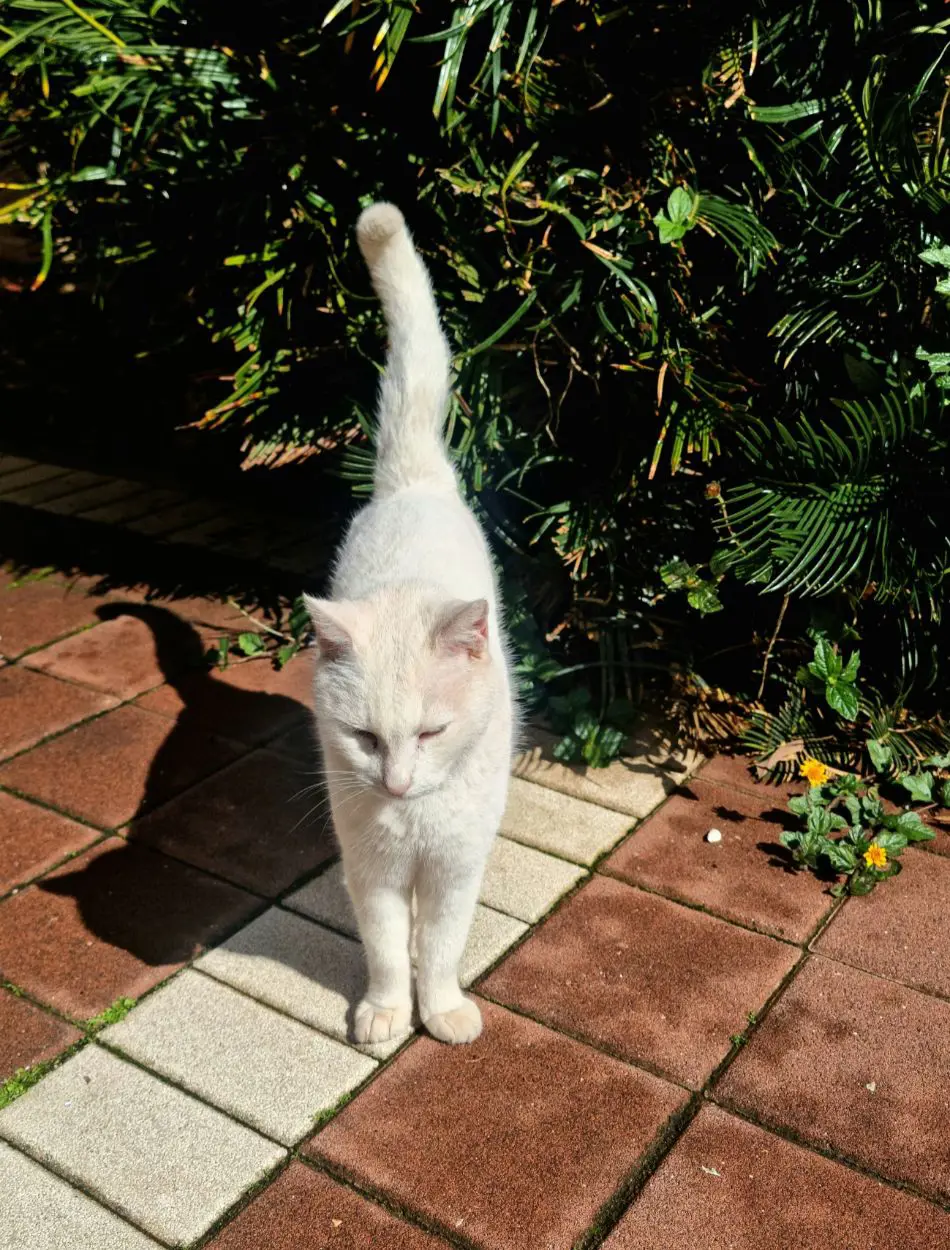
An upright tail indicates that your cat is feeling confident, content, and friendly and showing willingness to engage in communication.
This behavior is common during interactions between cats when they happen upon a peaceful meeting ground, such as a kitten greeting his mom.
Whenever the cat's tail is this way, it is a great time to interact with them. You can stroke them, give them treats, or play with them because they are in a good mood and willing to interact.
2. Question: Mark Tail
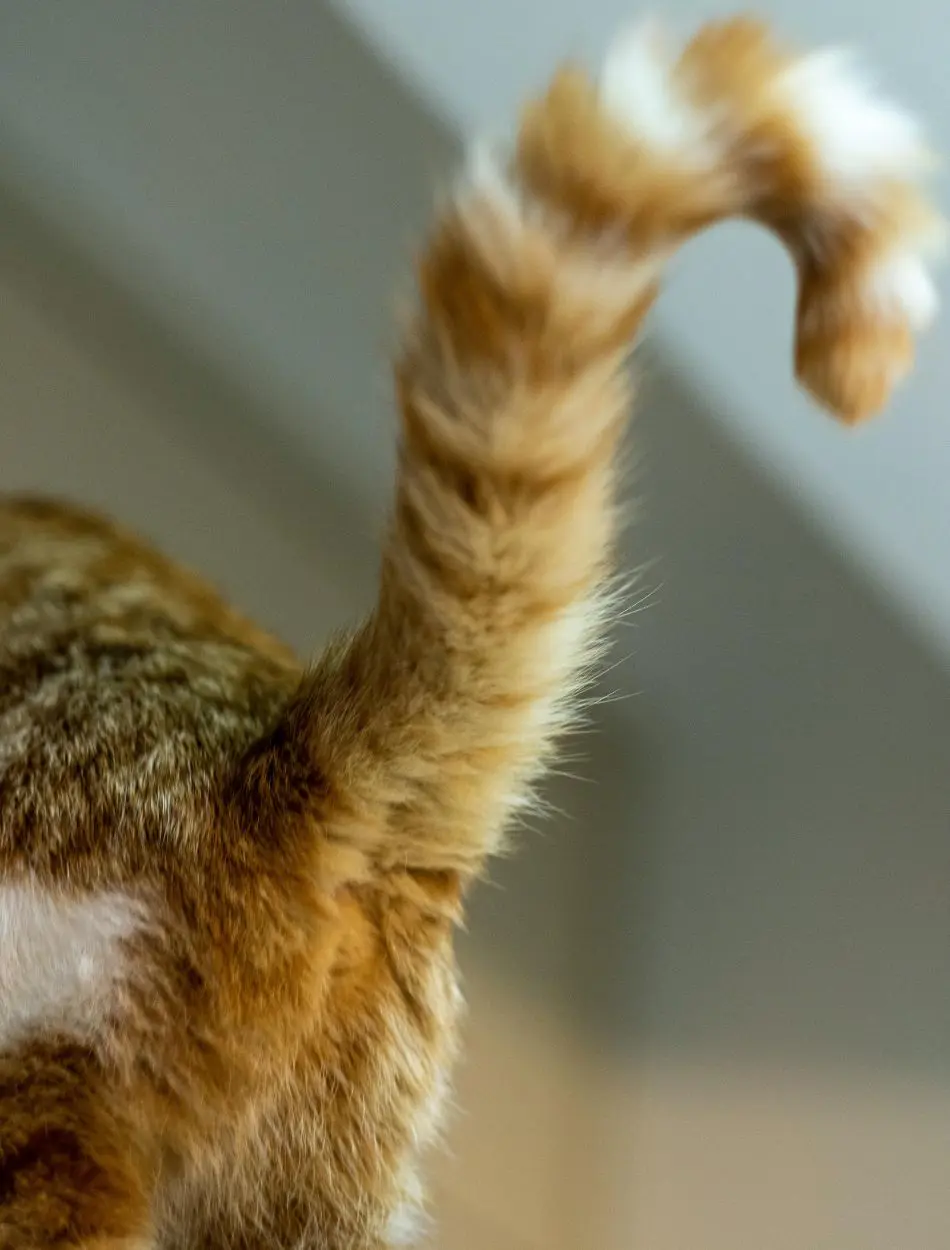
If a cat's question mark or soft hooked tail happens to be a question mark, it usually means curiosity and playfulness. They may be up for fun or investigating some element of their surroundings.
Cats use this position when they are happy and curious, which indicates that they feel secure but at the same time interested in their surroundings.
Take this as an opportunity to play with your cat, as the way they approach you with a hooked tail may mean an invitation to start playing.
Give them their favorite toy or gently chase them and pet them around their favorite areas of their chin or cheeks. This is an excellent time to develop their playful streak.
3. Tail Held Low
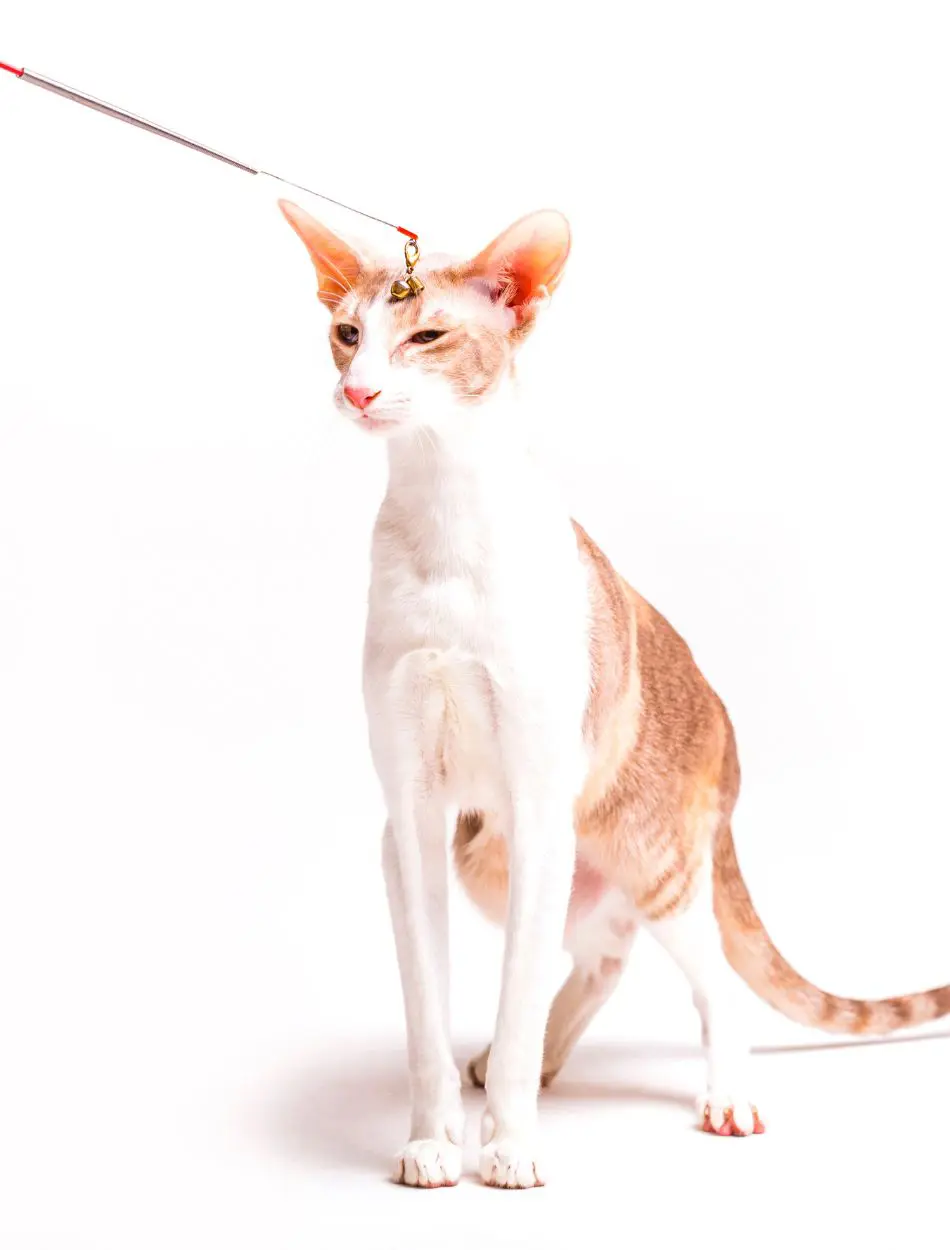
When a cat has a low-holding or tucked-in tail, it expresses fear, anxiety, or discomfort. This position takes place in the case of a cat if it feels threatened or uneasy in its environment.
This is their way of signaling that they do not feel safe and that they would be best left alone. Give your cat some space if the tail is low. No sudden movements or forced interaction, as this might just increase their anxiety.
Sometimes look around to see if there may be something in the environment bothering them, such as a recent loud noise or an unfamiliar visitor. Do what you can to minimize the presence of such factors so that they may feel safer.
4. Puffed-Up Tail
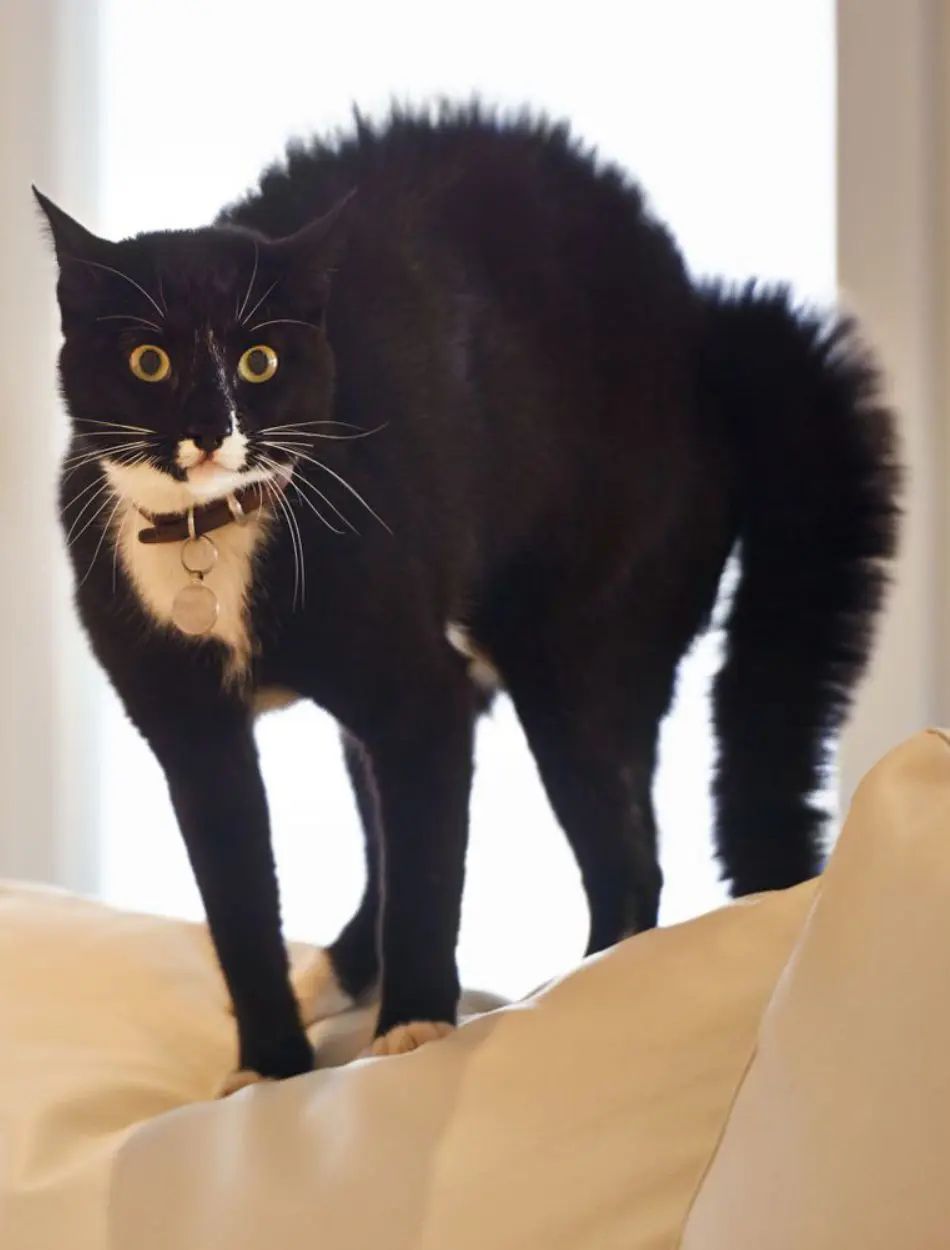
Puffed or fluffed tail and arched back are classic cat symptoms of fear and feelings of threat. This overstated posture is one of defense, signaling they're prepared to defend themselves.
You usually get this response when your cat undergoes sudden, intense stressors, such as a loud noise, an animal she is not familiar with, or an abrupt movement. Referred to as piloerection, this is an attempt to appear larger to intimidate whatever is threatening them.
Give your cat space to cool down and do not try to touch or cuddle your cat, since they are so reactive and may scratch or even bite. Instead, observe the environment and remove the stressor. Give them time to relax on their own.
5. Tails Wrapped Around Their Body
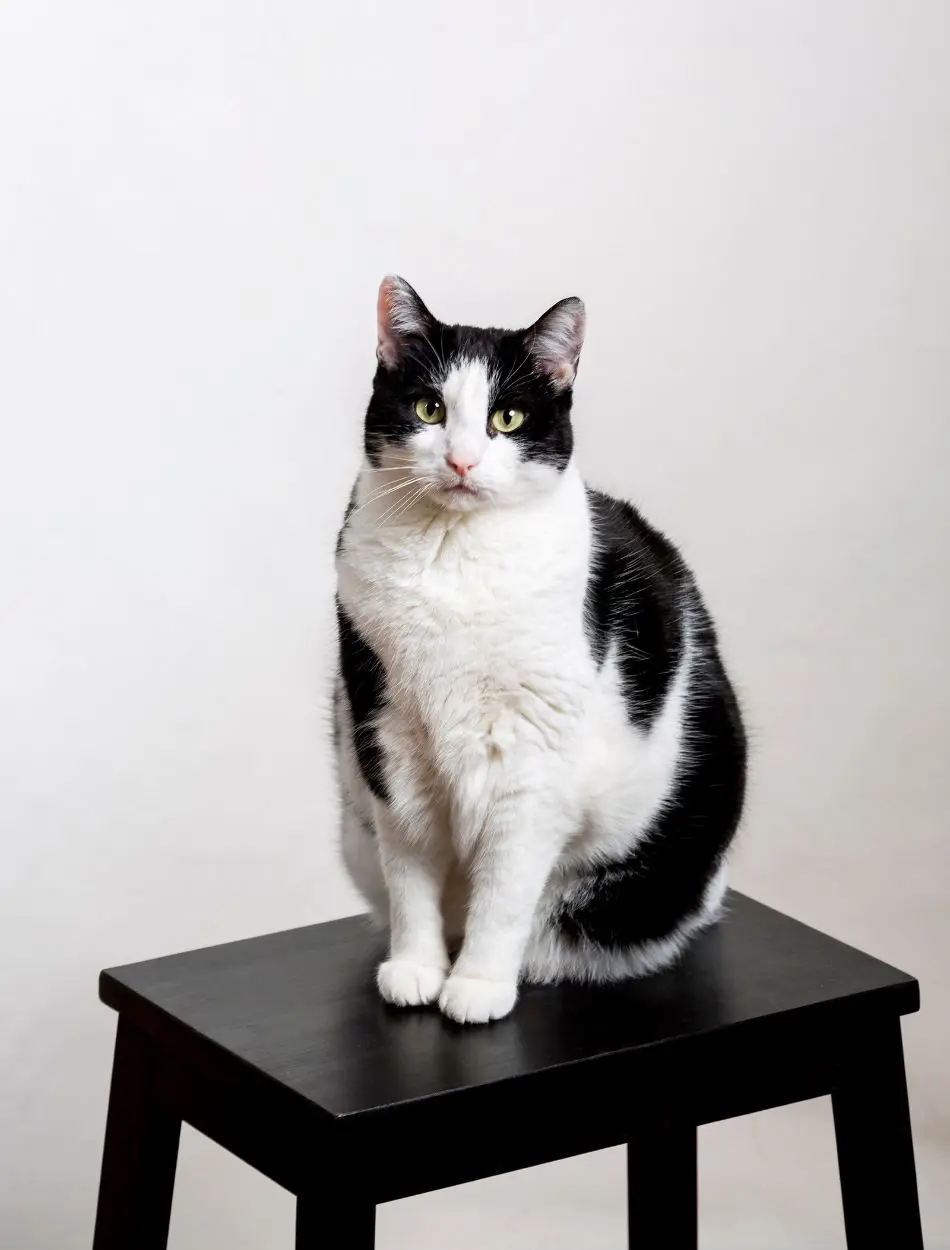
When a cat wraps its tail tightly around its body, this is generally a sign that they feel anxious or ill. Cats most often exhibit this posture when displaying any sort of vulnerability, needing protection from some type of threat, or even physical discomfort and sickness.
If your cat starts to withdraw and tuck its tail in this manner, then this may be an indication that it is not feeling well, or even emotionally traumatized.
Leave them to be and simply allow them to get comfortable.
Try removing any potential stressors from your surroundings and give it a place to retreat to where it's quiet. If your cat stays consistent in their behavior and seems unwell, you may want to consider talking with a vet regarding ruling out other health issues.
6. Tail Wrapped Around Your Leg
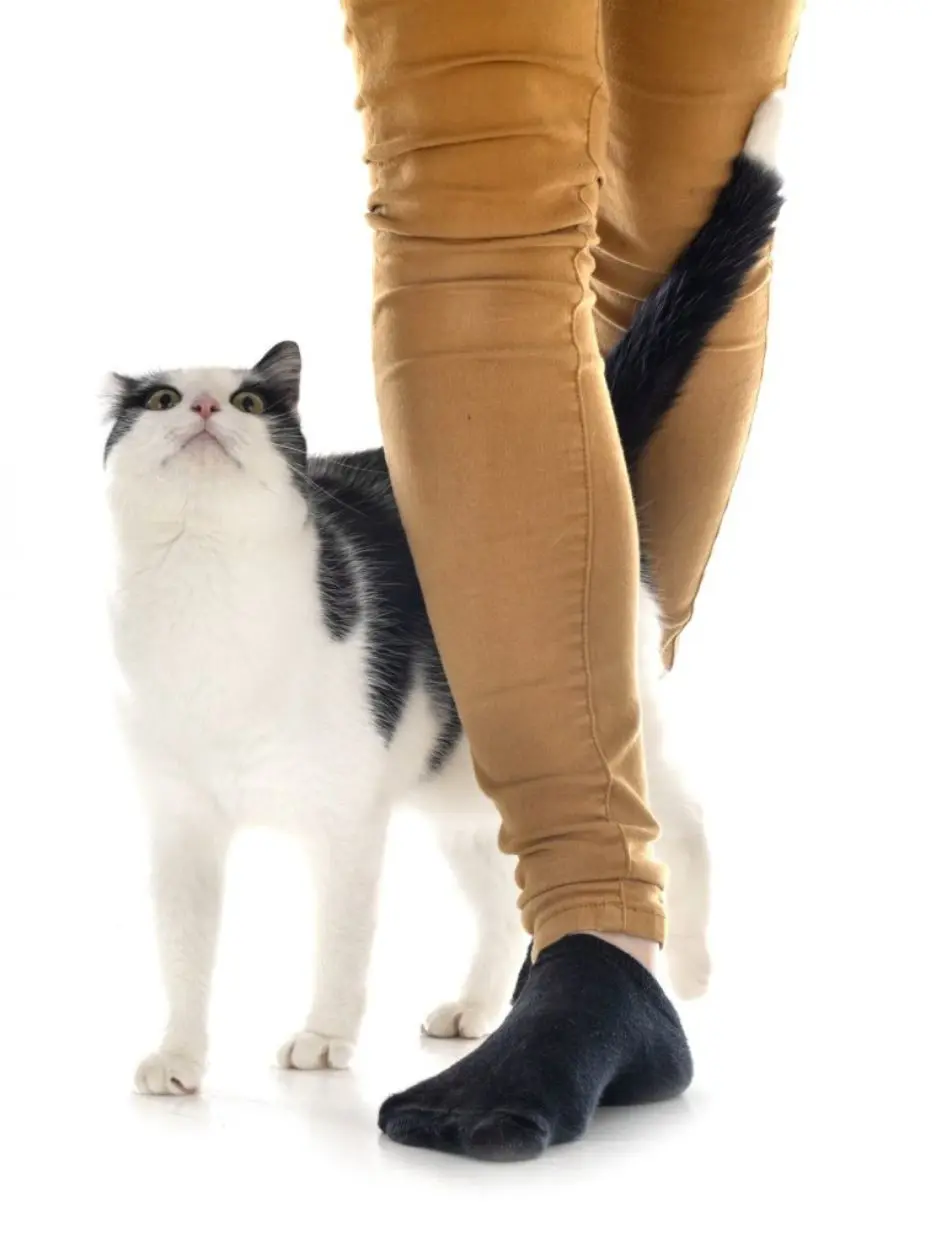
When a cat wraps its tail around your leg, this acts as a form of showing affection and comfort. This is a friendly greeting like what they might have with any other cat and other people with whom they feel comfortable.
This behavior indicates just one thing, that your cat feels secure and enjoys being with you. This is a sign that your cat trusts and loves you. You may return this action by stroking them lightly or even just talking to them with a soft voice. It is an activity that brings you closer to your cat.
7. Tail Flicking

A flicking tail generally means that your cat is either engrossed in something or somewhat annoyed. It is a softer version of telling you that they are actively involved with their surroundings but might not be up for a very long interaction.
It occurs when they are hunting or watching something with keen interest. If this occurs during petting, they are saying to stop it as they may be becoming overstimulated or annoyed.
If flicking takes place during play, it serves as an indication of participation, so you can continue. However, if this is shown during petting, you may want to cease for some time and give your cat his space so that further aggravation would be prevented.
8. Thumping Or Thrashing Tail
A tail that's moving or thumping rapidly is the surefire signal that your cat is agitated, irritated, or angry. They might feel frustrated, or threatened, or they might simply be fed up with over-petting and unwanted interaction.
This is a movement meaning that they want to be left alone. They may also do this during a confrontation with another cat or animal.
Your cat is annoyed, and continued interaction could induce more violent demonstrations of annoyance, such as hissing, growling, or worse, biting. Give them space and time to work out their storming selves.
9. Tail Quivering
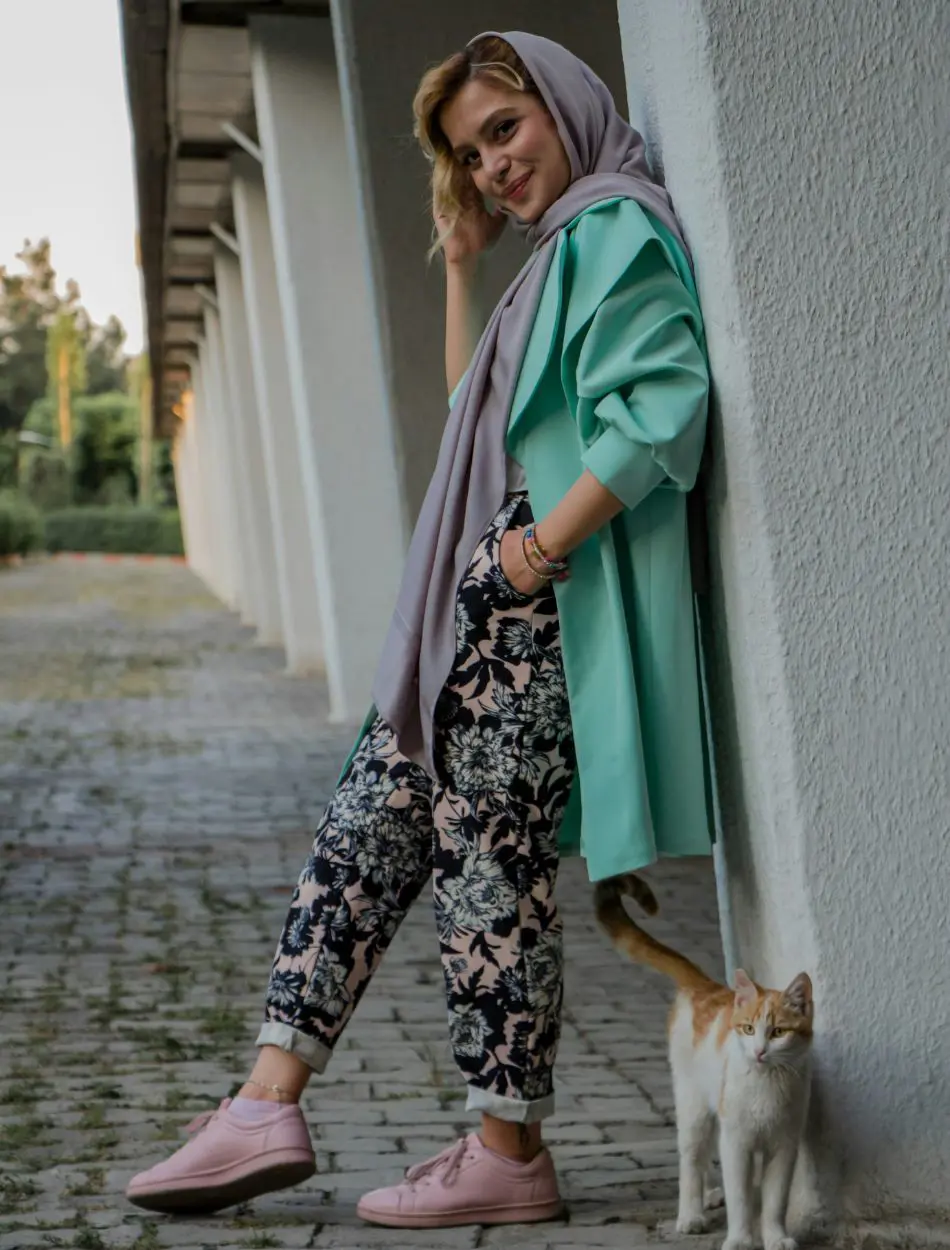
A quivering tail is a surefire sign of excitement and watch for it when your cat greets you or their favorite toy. This is mostly evident when welcoming and your cat is super excited to see you. It is an indication of super-high excitement and positive energy.
But if your cat quivers their tail against a vertical surface, it can also be a territorial marking behavior, you will notice this near furniture, walls, or other objects.
If your cat is excited, engage them with affection or play. However, in cases of territorial marking, most especially unneutered males, one should consider discussing the behavior with a vet for management.
10. Slow Swishing Tail
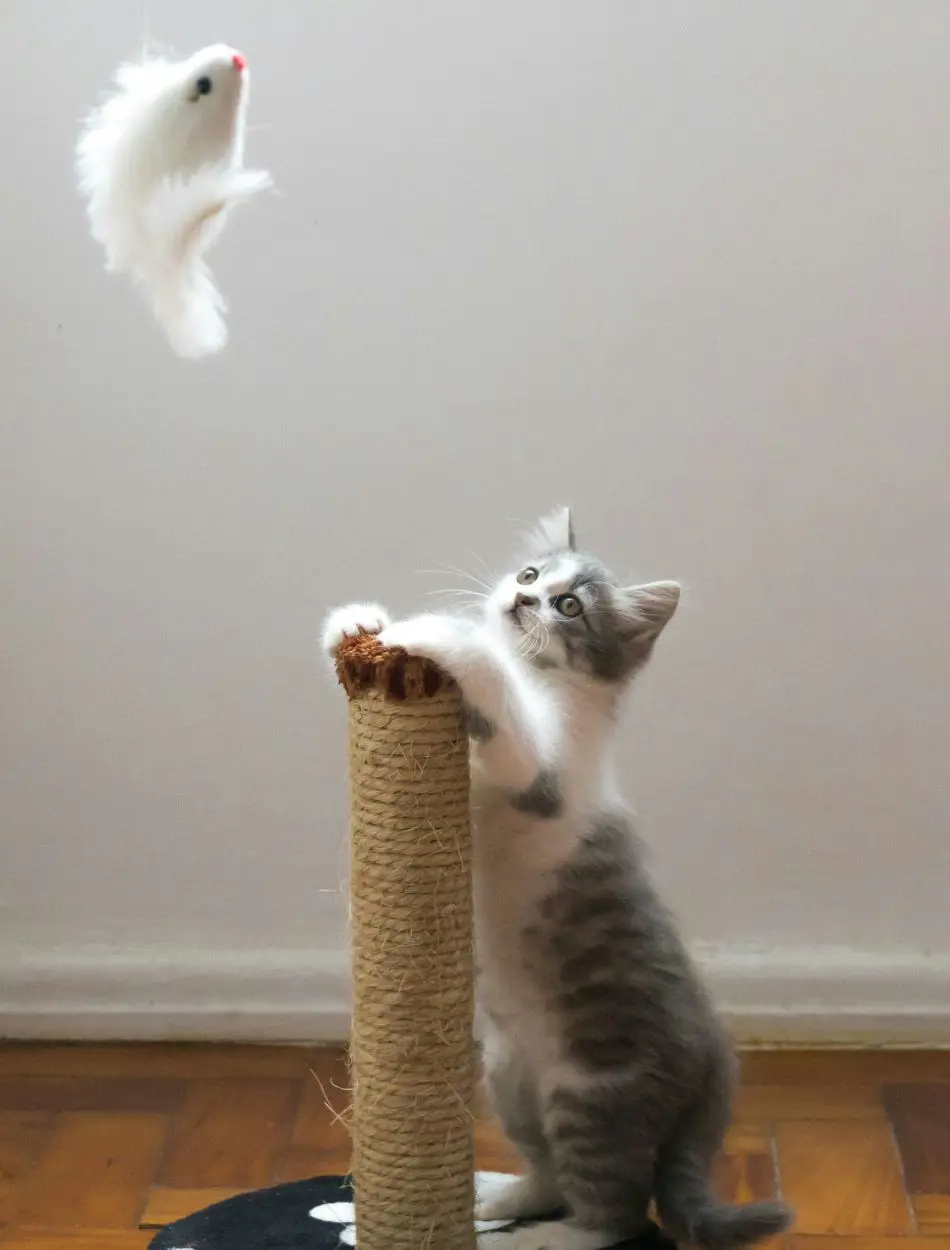
This would mean that your cat is targeting something and preparing to spring into action in anticipation of what they intend to do, such as pouncing, hunting, or just dealing with something they may see.
You see this tail movement when your cat is on the stalk for a toy, insect, or any such thing that interests him. This is a sign that he is in hunting mode and
Centering intently on his target.
Your cat wishes to engage in some play, as they are prepared for action. In such instances, feathered wands or small bouncy balls are perfect for letting out built-up energy.
11. Twitching Tail Tip

When only the tip of your cat's tail is twitching, it could mean your cat is slightly annoyed or deeply focused. The subtler this movement, the more it indicates engagement in something, such as watching a bird, or it is feeling overstimulated.
This you usually see when your cat watches out at something intently or when they are irritated during the interaction. It's a prelude either to full concentration or that they will get up and leave.
If it's twitching while watching, let the cat focus on it. If it is upon petting, it is the sign of 'stop' before they get more irritable.
Why Cats Are Sensitive About Their Tails
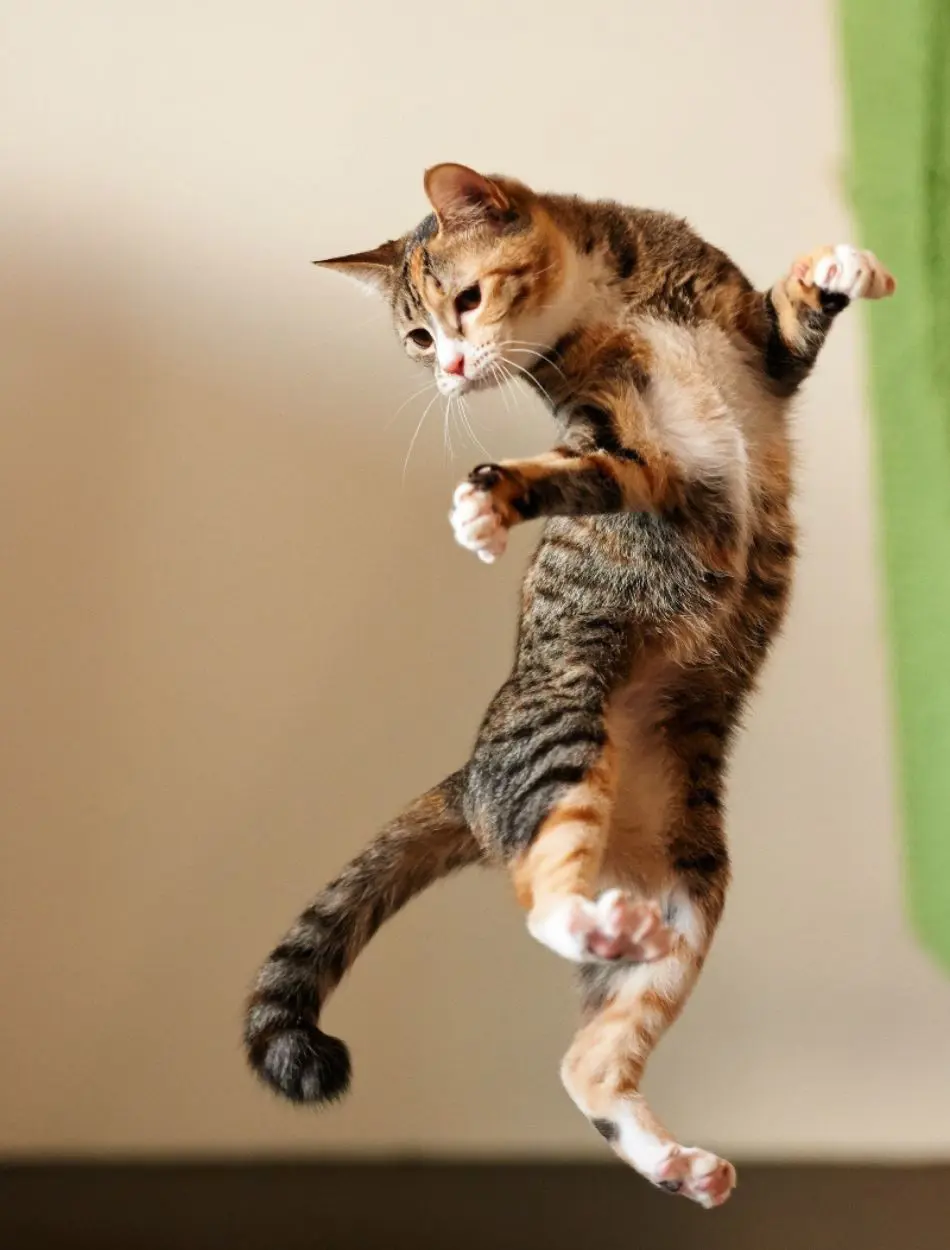
As such, it is expected that most cats will be protective of their tails, they draw it in or shy away when it is touched. This is due to several reasons, including the following:
High Concentration of Nerves
One of the reasons is that a high percentage of nerves are in the tail, making them highly sensitive parts of the feline body. The tiniest touch will be an overwhelming sensation for them, and this is why many felines do not want their tails to be manipulated in any way.
Cats do not like their tails to be touched, since this stimulates their nervous system. This sometimes makes them touchy if someone bumps into their tail all of a sudden. It is also important to realize this so you are able to avoid making your cat feel uneasy and further along the process of trust-building.
Vulnerability

Cats rely a great deal on their tails for balance when making jumps or even negotiating narrow areas. It would therefore be very critical of their sure-footedness and assurance.
This can make a cat uncomfortable or vulnerable in some sense because its natural state of physical and emotional balance is being tampered with. Hence, cats may keep their tail to themselves and retreat if they believe that their space has been violated.
Health Indicator
Unusual movement of the tail or sensitivity may indicate pain or discomfort and hence serve as an indicator of some other underlying health problems. By observing changes in feline tail behavior, you can identify problems well in advance.
For instance, if your cat always keeps its tail hidden or does not like it being touched, then it can be in some kind of physical distress. Regular observation of their feline tail language could serve as preventive health for them.
Balance and Coordination
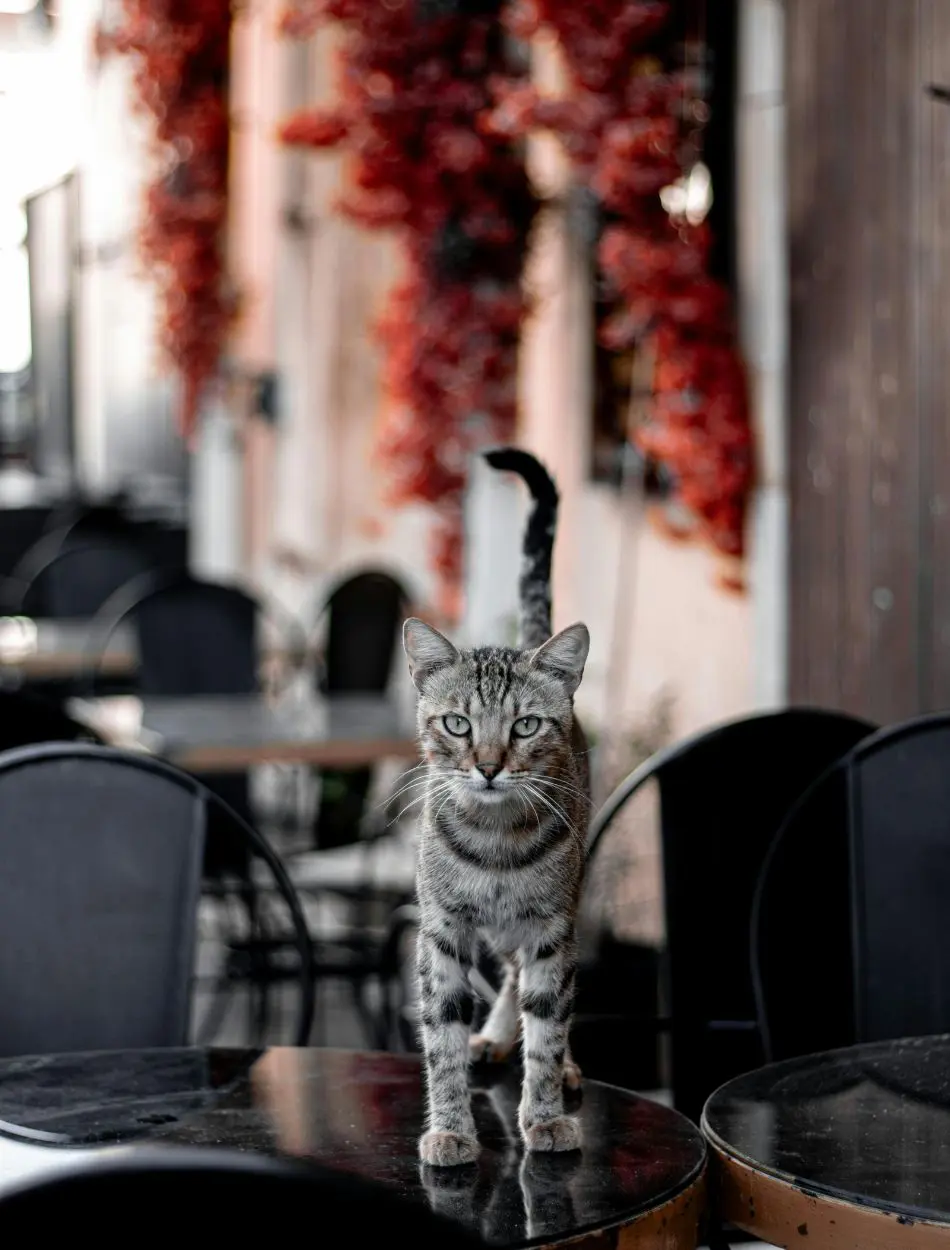
The feline tail has a crucial role in the balance of this pet animal when going up ascents, running, or making sharp bends. It helps them in their very accurate movement in space.
Any form of injury or irritation of the tail would considerably affect its ability to coordinate and have a continuous smooth movement. Hence, making the feline tail a very important tool of its physical agility and not just a sensory organ.
Communication Tool
The tail of a cat is important in its body language, reflecting their mood from joy and fear to frustration. And maybe just one small twitch or a puff-up will say it all.
Touching their tail hinders this natural form of communication and can make it much more difficult to get them to express themselves. Respecting their tail is a means of knowing your cat better.
Fight Or Flight

The puffing of the tail is part of the 'Fight or Flight' response when the animal is scared or feels threatened, an instinctive reaction that makes them appear larger and intimidating to their perceived threats.
The tail also serves to indicate acute stress or fear and thus is a key component of the "fight or flight" response. The tail should not be contacted during such times because the cat is already on high alert.
Responding To Tail Language
It's great that you understand your cat's tail language and knowing how to respond is key to nurturing and growing a strong bond with your cat while making them feel safe and understood.
1. Leave Them Alone
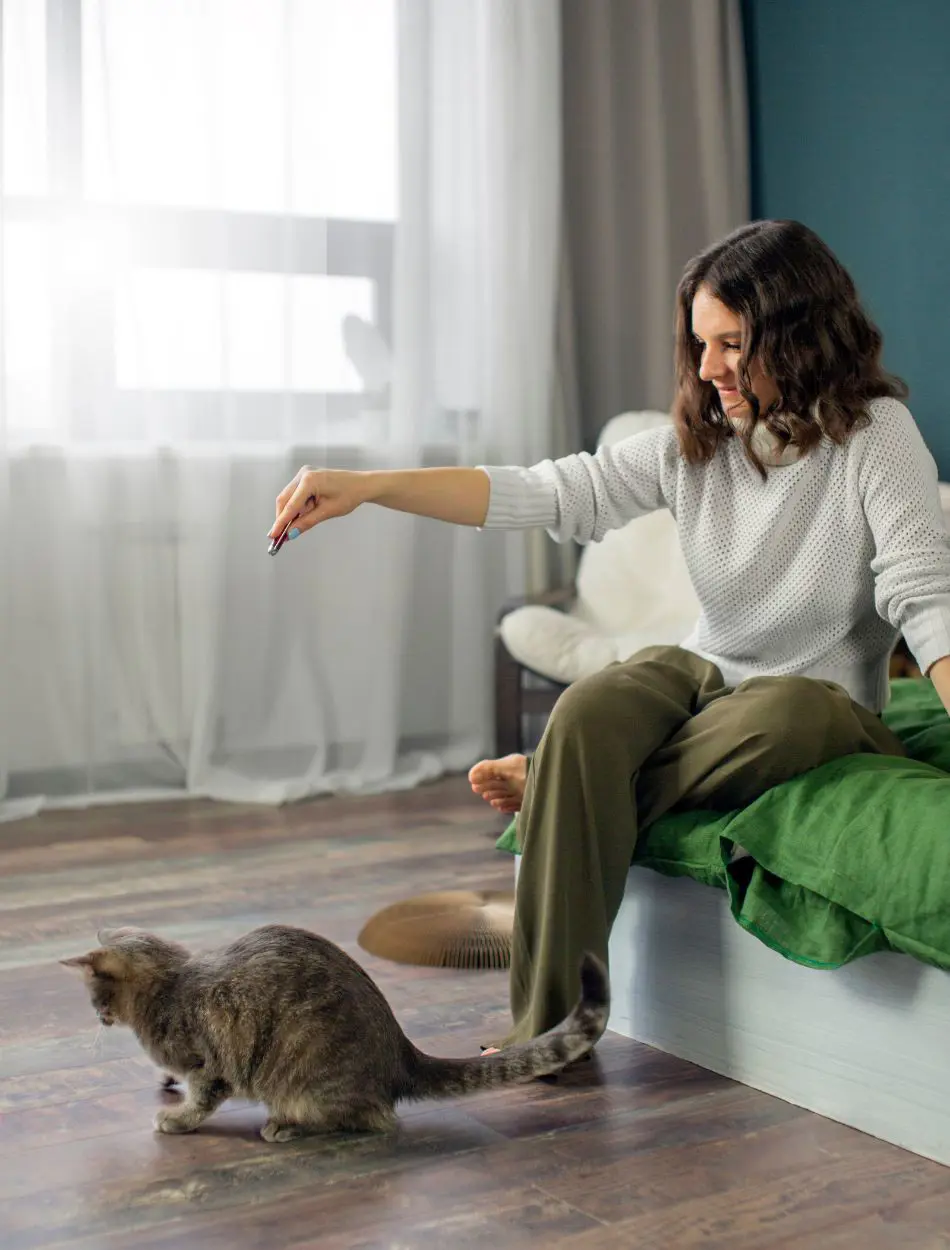
When the tail of your cat shows signs of being irritated, flicking, or thumping, it's better to leave it alone. Trying to force them out during this period could result in stressed or defensive cats and, the engagement should be left to their discretion.
Let them come to you in their time, and this shall build trust and make them feel more comfortable. Respecting these boundaries helps you create a safe and positive environment where your cat knows her signals are understood.
2. Playfulness Encouragement
Whenever the cat's tail is in a question mark or upright, that is a good time to play with them. Grab their favorite toy or use interactive games like feather wands to stimulate their natural hunting instincts.
Playtime is an excellent way for them to get rid of this pent-up energy and is vital for their mental and physical health. You will be fostering a strong bond by encouraging their playful behavior and thereby keeping your cat happy and healthy.
3. Comfort
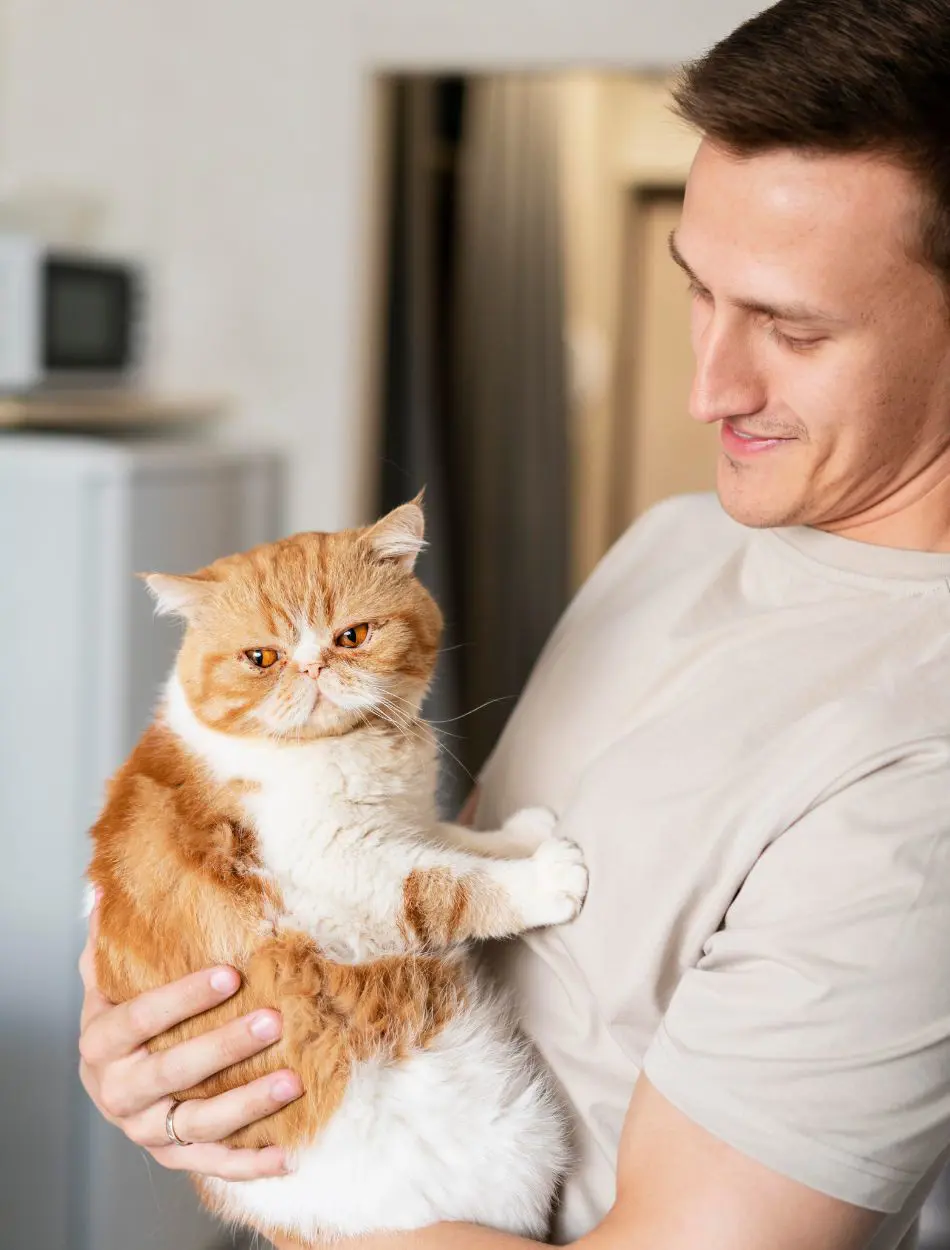
If they have a low or tucked tail, they show fear or anxiety. You'll want to create an environment for them that is calm. This may be giving them quiet space to retreat into or offering soothing reassurance with softly spoken words.
The comfort during such moments of stress makes the animal feel safe and less anxious. Over time, your cat will associate a sense of security with your presence, further improving your bond with them.
4. Observe Health
Unusual tail behavior, such as constant twitching or sudden changes in posture, may signify health problems. In this regard, if you feel any abnormal movement, then you must pay attention and sometimes consult your veterinarian for advice.
These will bring you to early detection of health problems if you pay attention to your cat's tail language. The observation of the cat will ensure that it stays healthy and, in the future, avoids complications.
5. Protected Spaces
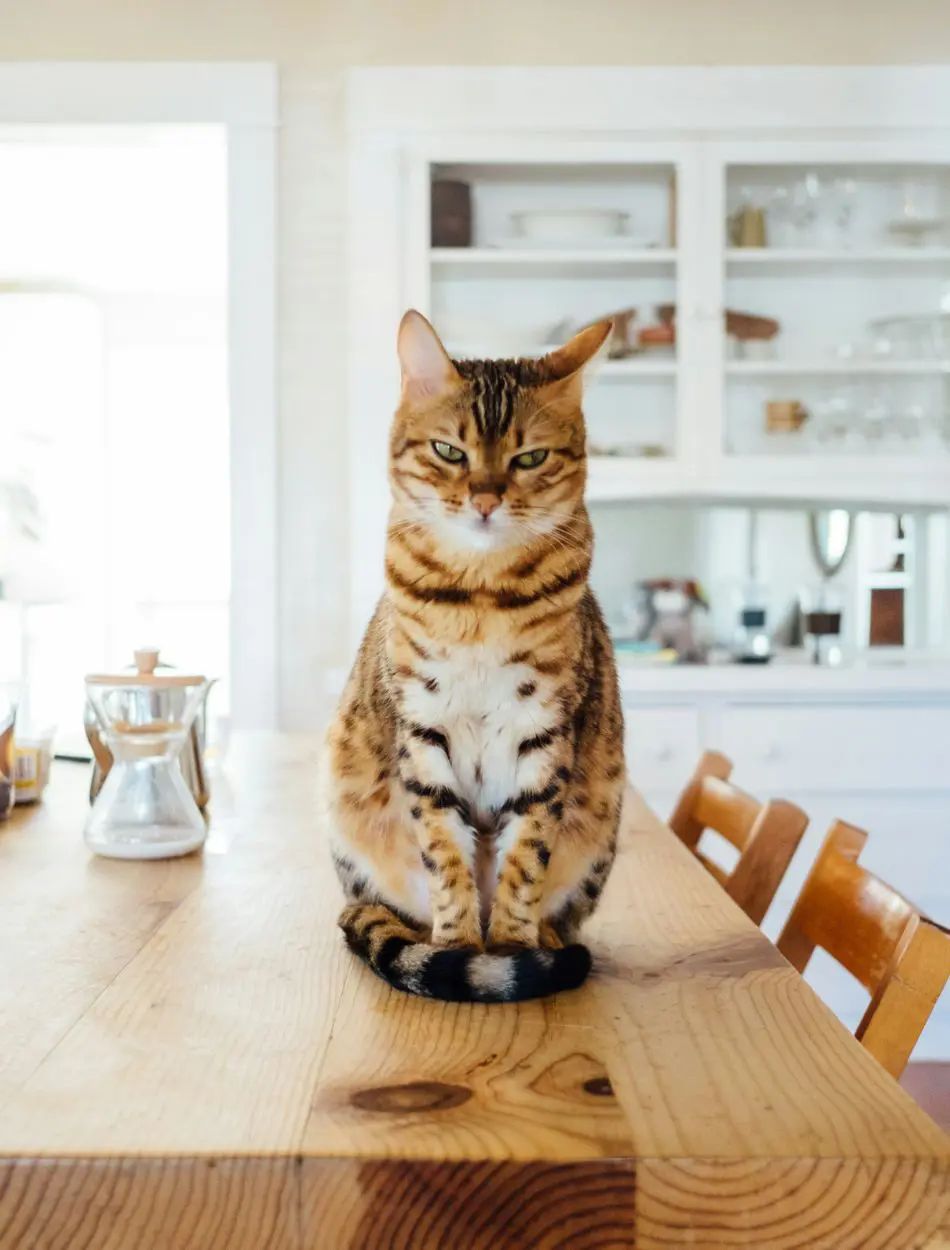
So, the cat should have a quiet and secure place to withdraw when feeling overloaded or in desperate need of sleep. In such a way, the provision of this place-whether it is just some cozy nook or one room-helps the cat feel safe and comfortable.
When your cat wraps their tail around their body or tucks it tightly, this may be the protected space they need. Offering a place of solitude shows your cat they can let their guard down and safely relax at any time.
6. Play Interactive
Engage in interactive play with your cat using toys that stimulate the body and mind. Toys such as laser pointers, feather wands, or puzzle feeders keep your cat active and mentally engaged at the same time.
These tail movements during playing mostly mean either excitement or hunting behavior, so when your cat plays with its toys, this lets them have fun while expressing their intuitive self. This is an excellent way to keep them entertained and bond better with them.
Why Is It Necessary To Understand Cat Tail Language
Cats typically communicate through subtle expressions. Their tails just so happen to be one of the most honest notifications as to how they're feeling.
By learning to decipher these movements, you can gain a deeper understanding of your cat's emotions and needs. Here's why reading your cat's tail language is important to building their relationship stronger.
To Know Their Emotions
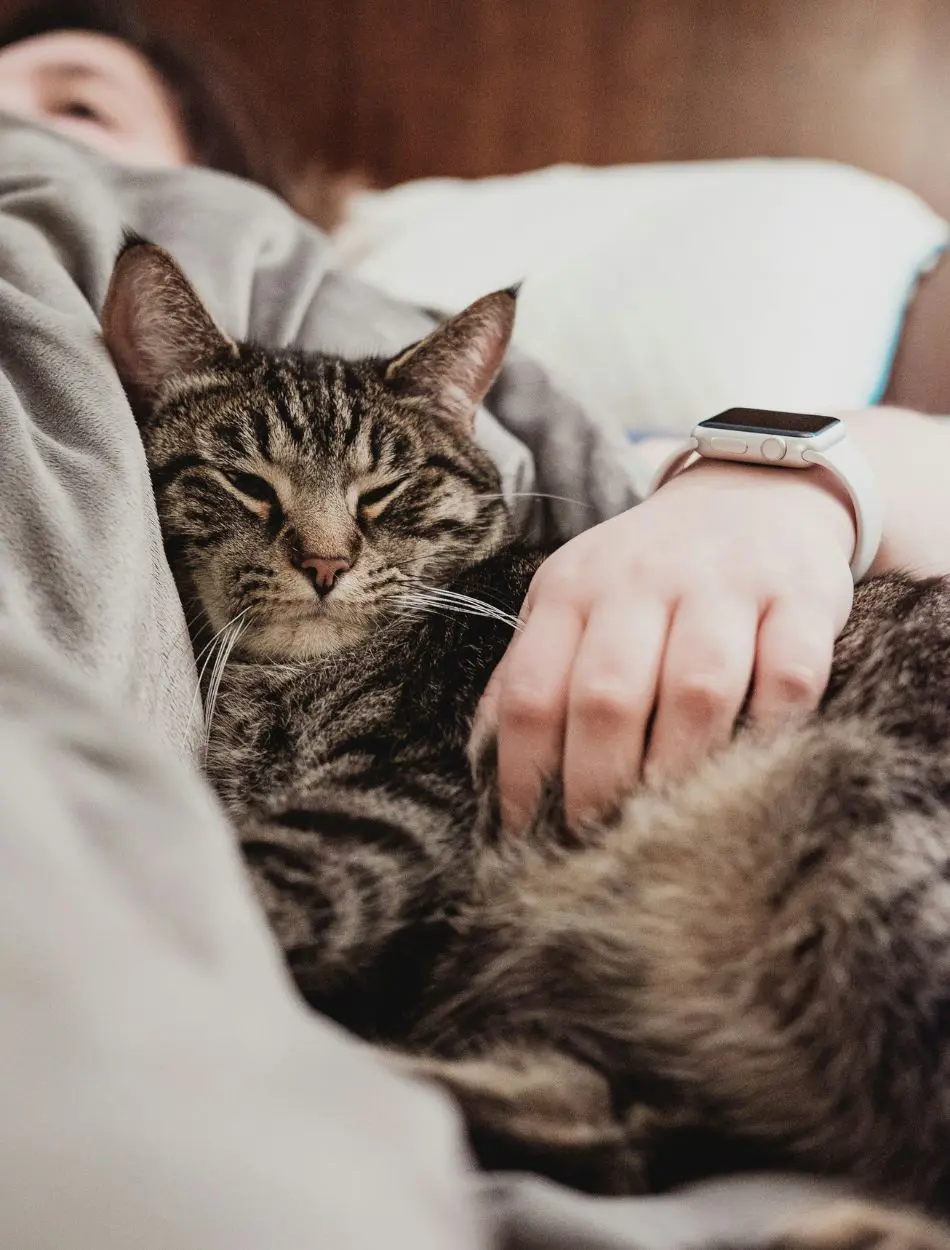
Your cat's tail will be a sure tell about where its head is and will help you decode precisely how it is feeling at any given time. High and raised, an assertion of confidence, and low and tucked in, the tail is a vital means of communication.
Paying attention to these subtle hints, you can therefore easily be aware of whether your kitty is feeling contented, tense, or annoyed. Such emotions will enable you to respond appropriately towards actions that will leave your feline friend well taken care of.
Preventing Stress
Cats are hypersensitive to everything going around them. Unfamiliar sounds or uncalled-for sudden movements, thus, may result in instant stress for your companion. Loud noises, new people, or even simple altering routines are some of the reactions that could drive anxiety into your pet.
Learning about your cat's tail signals enables you to step in and readjust to their ambient environment to minimize that stress factor. You shall be able to catch early signs of discomfort and prevent escalated anxiety in a comforting, safe environment.
Gain Trust
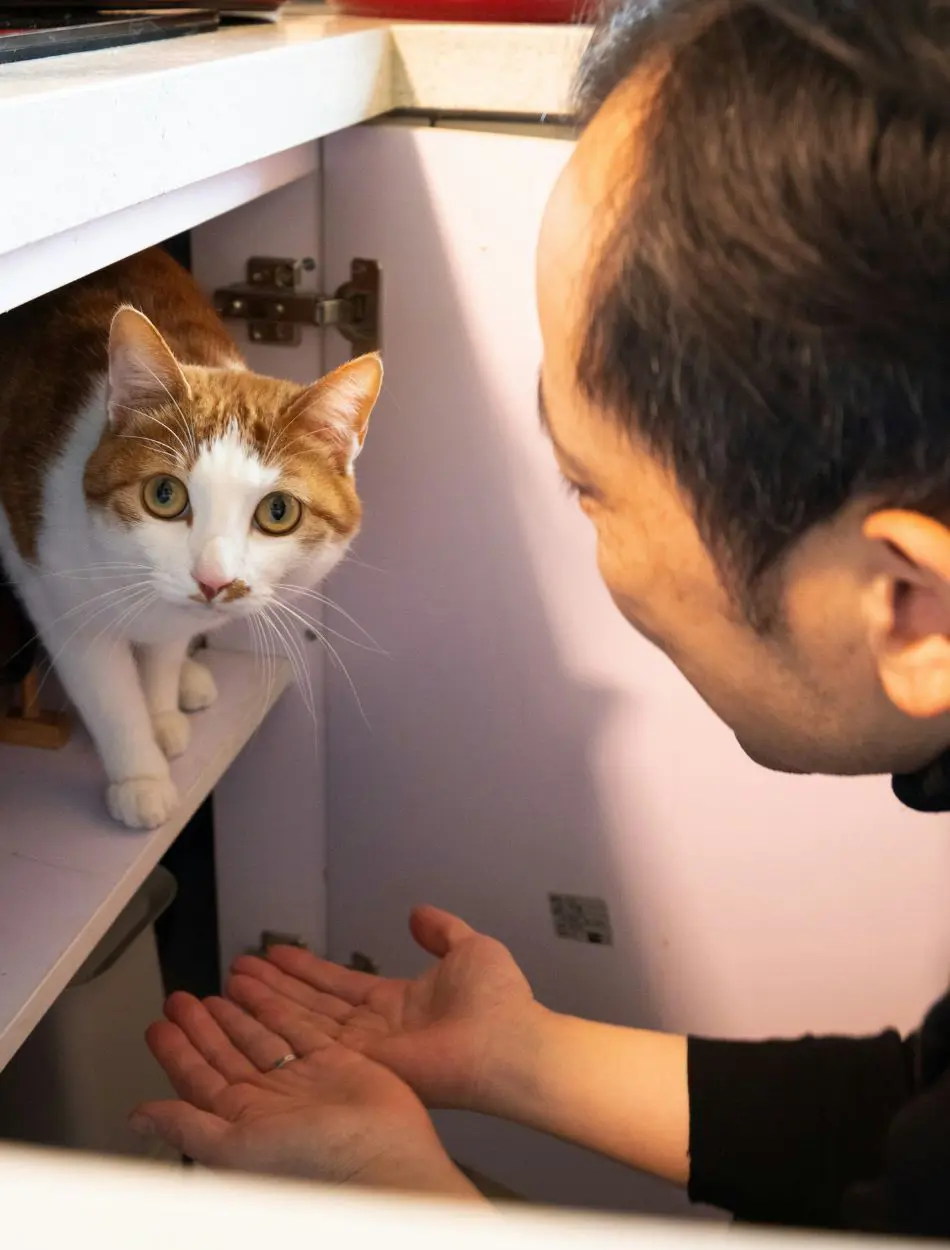
Once you recognize and act accordingly on your cat's tail signals, a sense of trust will build up between you and your pet. They feel understood when their moods and boundaries are respected and, this will reinforce good relations.
With time, the cat will come to trust you more because they know that you understand what they are trying to say. This mutual understanding strengthens bonds and enables both to coexist more harmoniously with improved relationship satisfaction.
Recent posts
Cats
Blood In Cat Stool: Beware of These Causes
Noticing blood in your cat’s stool is a sight no pet owner wants to bear witness to. While seeing your cat excrete blood is hard enough already, this symptom could indicate something much more devastating. Take a look at some of the issues and ...
How Cat Love Bites Happen And Its Respond
You may wonder about the various activities of your cats, among which you may wonder about their biting you, mainly while you are petting them. You may wonder how bites happen and how to deal with them. As the term suggests, it is known as kibble and...
18 Reasons Why Your Cat Nose Is Dry
The nose is a very vital part of a cat's health and provides information about whether or not a cat is well or ill. Many pet owners believe that if a cat possesses a dry nose, then it must be ill. But that is not the case, it may include the environm...
Why Is My Cat Not Drinking Water
Cats are notoriously finicky when it comes to water consumption, and it's natural to worry if your canine companion isn't drinking as much as you expect. From environmental preference to a simple behavioral quirk, many factors can contribute to the c...
Why Is My Cat Nose Wet?
If you have a pet cat, you might have noticed their wet nose and wondered why my cat's nose is wet. Does a cat's wet nose signify something or is it very normal? these questions might have popped up in your head at least once. It is normal for ...
18 Reasons Why Your Cat Is Snoring
While it may seem cute or amusing, snoring in cats can also be an indication of several underlying health problems that pet owners need to know about. Some light snoring is typical for certain cats, however steady or noisy wheezing could demonstrate ...
